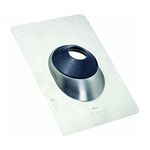Q:
Although still tight, the asphalt roof on my house is the original one and is just over 28 years old. Rather than gamble much longer, I’ve decided to reroof with asphalt shingles.
James F. Farley, Burlington, MA
A:
Richard Wright, a roofer in Natick, Massachusetts, replies: Before reroofing, you should first make sure you don’t have any ice-dam problems. If you’ve had water coming in around windows or interior walls, the leaks could have been caused by ice dams. Adding a second layer of shingles will compound this problem.
A roll-roofing valley—where shingles on both sides are cut back from a piece of roll roofing running in the valley—is not really that common. The more practical and prettier valley is a woven valley, where the shingles are placed over one another alternately from each roof. Leaving the existing roll roofing is no problem, but it will create a sunken look when the new shingles are woven in place.
You can avoid a sunken valley by cutting new shingles lengthwise the exact width of the valley and installing them vertically in the valley. These shingles will raise the valley flush with the rest of the roof plane. When installing any valley shingles, always keep nails as far from the center of the valley as possible.
The visible lead that you see at the chimney is counterflashing, not step flashing. It was installed by the brick mason who built the chimney. Curl the lead upward from the outer edge, not from the mortar joint. The old mortar in the chimney could easily break, leaving you with a piece of lead in your hand rather than in the chimney. You can now install lead step flashing for each course of shingles abutting the chimney. This step flashing goes underneath the counterflashing. Once the step flashing is done, push the lead counterflashing back in place and mold it back into shape against the chimney with a block of wood and a hammer. Believe it or not, there’s a detailed drawing of this procedure on most every bundle of shingles you buy.
Leaving the existing drip edge is okay, but you’ll be looking at the butt edge of four layers of shingles: two from the old roof and two from the new. The alternative is to cut off the face of the 28-year-old drip edge with tin snips and install the new drip edge over the existing shingles.
Fine Homebuilding Recommended Products
Fine Homebuilding receives a commission for items purchased through links on this site, including Amazon Associates and other affiliate advertising programs.

Peel & Stick Underlayment

Flashing Boot

Fall Protection






















